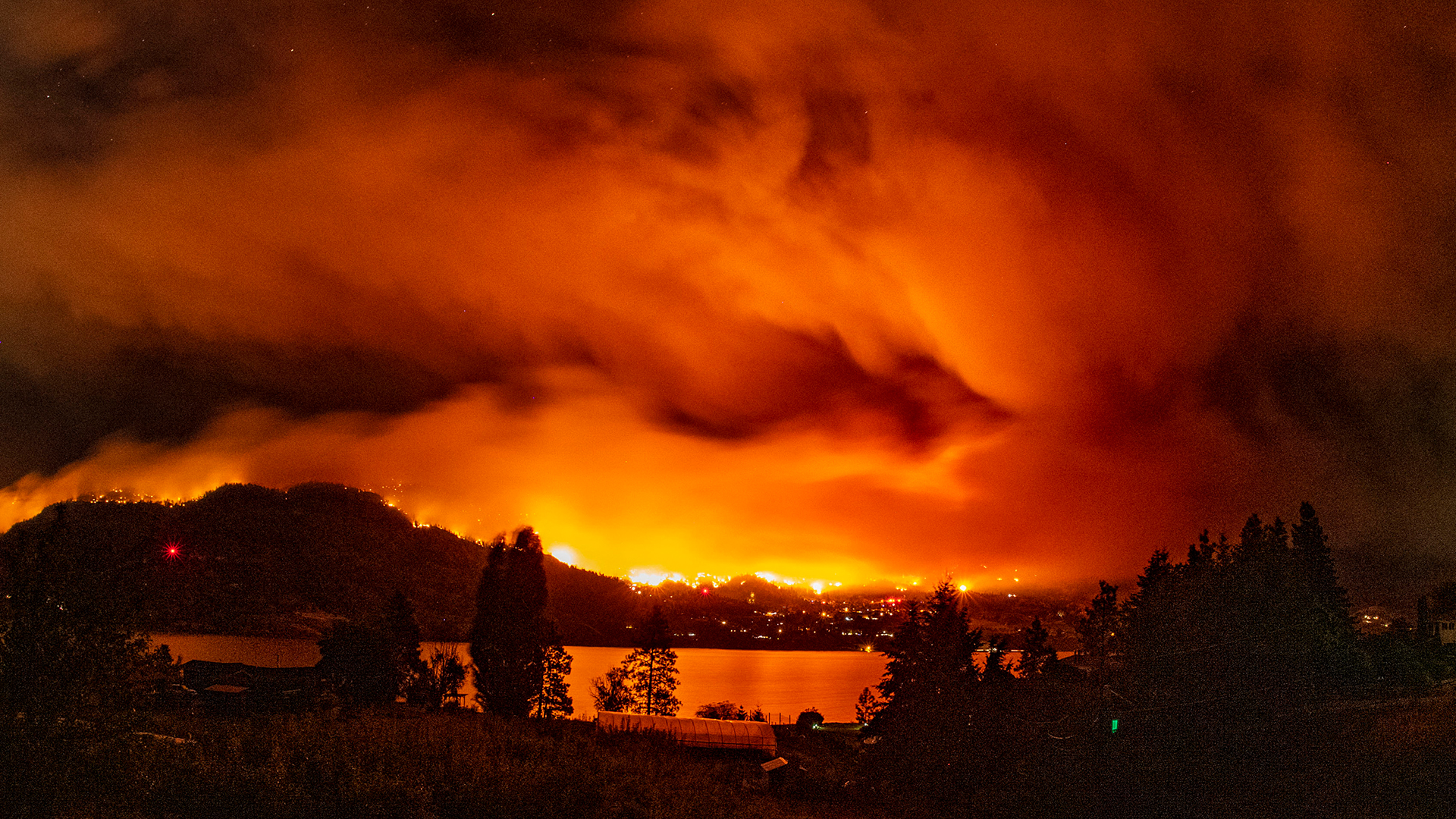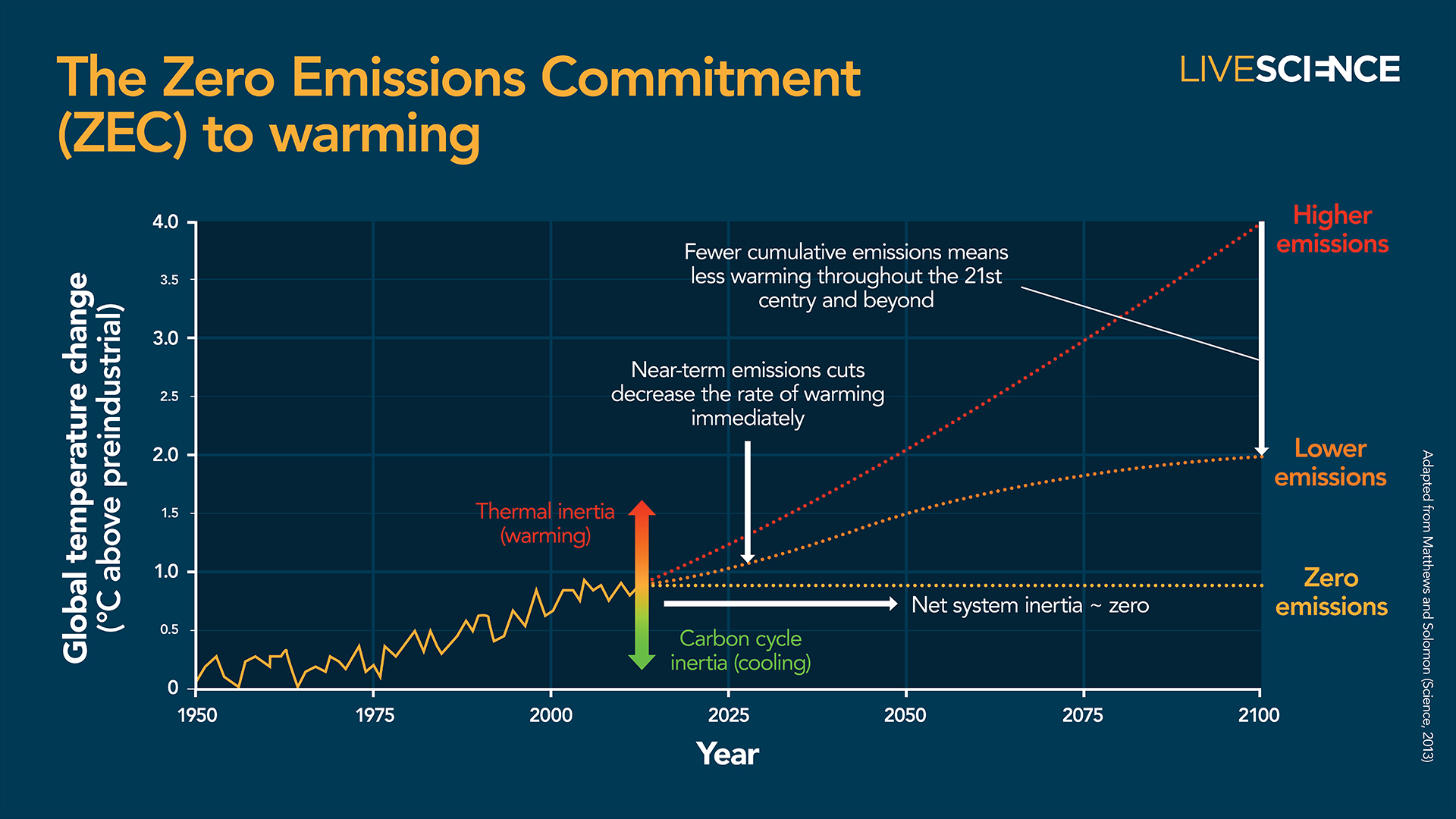Michael Mann: Yes, we can still stop the worst effects of climate change. Here's why.
Opinion: State-of-the-art climate models show warming stops once we stop emitting carbon. That means there's still time to stop the worst impacts of climate change.

Last June, I came across a news piece claiming that "scientists failed for decades to communicate [climate risks] to policymakers and the public." However, the story had mischaracterized a scientific review article about communicating unlikely but important climate consequences in the presence of deep uncertainty.
But what bothered me most was the notion that scientists have failed to communicate climate risk. Many of us have spent decades trying to do just that, despite a misinformation campaign by polluters to confuse the public and policymakers.

In addition to being the presidential distinguished professor and director of the Center for Science, Sustainability and the Media at the University of Pennsylvania, Michael E. Mann is author of the new book "Our Fragile Moment: How Lessons from Earth's Past Can Help Us Survive the Climate Crisis." (PublicAffairs, 2023) and "The New Climate War: The Fight to Take Back Our Planet" (PublicAffairs, 2021). He has won several awards, most notably the Award for Public Engagement with Science from the American Association for the Advancement of Science in 2018 and the Climate Communication Prize from the American Geophysical Union in 2018. In 2019 he received the Tyler Prize for Environmental Achievement. In 2020 he was elected to the U.S. National Academy of Sciences.
If climate scientists are guilty of anything, it's arguably the opposite: We have, in some ways, failed to communicate that we can still avert catastrophic climate change. What do I mean by that? Let me delve a bit into the history of climate science.
Early climate models were quite crude by today's standards. Carbon dioxide levels were treated as a control knob that we simply dialed up a certain amount. Because of the sluggish nature of the oceans, which can absorb great amounts of heat (what we call "thermal inertia"), simulations showed sea surface temperatures rising for decades after we took our hands off the CO2 knob.
If thermal inertia was all there was, keeping warming below the "dangerous" 1.5 degrees Celsius (2.7 degrees Fahrenheit) level would be nearly impossible, given that warming is already near that level, at approximately 1.2 C (2.2 F).
But thermal inertia is just half the story. We don't have our hands directly on the CO2 knob; instead, we emit CO2, and the way Earth's systems respond determines the levels of CO2 in the atmosphere. Some emitted carbon is absorbed by plants and vegetation on land. An even larger amount is absorbed by the oceans. To date, about half of the carbon pollution we've generated since the dawn of industrialization has been taken up by these natural carbon "sinks."
Nowadays, scientists use more comprehensive and elaborate models that treat our carbon emissions more realistically, allowing components of the ocean, atmosphere and biosphere to interact with the atmosphere to determine where emitted carbon actually goes.
Get the world’s most fascinating discoveries delivered straight to your inbox.
So what do these more comprehensive models predict happens when we stop emitting carbon? The thermal inertia of the oceans still leads to delayed warming. But the oceans continue to draw carbon from the atmosphere and the atmospheric CO2 concentration — and therefore, the greenhouse effect — decreases, causing cooling. This negative "carbon cycle inertia" almost perfectly offsets the positive thermal inertia, and the net inertia of the system is very close to zero.
We call the additional warming that will occur once we stop polluting the "zero emissions commitment" (ZEC), and it appears to be very close to zero. The ZEC suggests we're committed only to the warming we've already caused with historical emissions. The ZEC being close to zero is the reason we can define a "carbon budget," or the amount of carbon there is left to burn to keep warming below some specified level. It is the source of the well-known warning that we must reduce carbon emissions by 50% by 2030 and reach zero emissions by 2050 to keep warming below the critical 1.5 C mark.
While this paradigm shift in scientific understanding emerged more than a decade ago, public climate discourse has only recently reflected it. Perhaps scientists have been hesitant to tout this finding because it felt tenuous, depending on highly technical details of the physics, chemistry and biology of the oceans and how well they are all represented in current-generation climate models. In some models, the ZEC is positive and there is continued warming. In others, the ZEC is negative and there is actually cooling after emissions cease. Uncertainty seemed to abound here.
But in a study published Nov. 14, 2023 in the journal Frontiers in Science which I described in an accompanying editorial, nearly two dozen experts in climate and carbon cycle dynamics, led by Sofia Palazzo Corner at Imperial College London, have provided the most comprehensive assessment yet of the ZEC.
They found that for at least the next 50 years, the ZEC is very close to zero across the range of state-of-the-art models. And there's good certainty until we emit 3,700 gigatons of carbon — (we've burned about 2,500 gigatons already) — that the average ZEC across models is not only near zero but very slightly negative (roughly 0.1 C of cooling). While the ZEC varies among models, in all cases, it's less than plus 0.3 C of additional warming. Given that we're currently at 1.2 C warming over preindustrial levels, this means that there's still a good chance to avert 1.5 C of warming.
But there are some caveats. Even after emissions reach zero, warming beneath the ocean surface will continue, the ice sheets will likely still melt, and sea levels will probably still rise. Ocean acidification will worsen, and possible surprises could be in store a century or more down the road. But the takeaway from the ZEC study is that our efforts to decarbonize now can directly and immediately slow surface warming and mitigate the heat waves, floods, droughts, wildfires and superstorms fueled by that warming.
How do we make sense of recent, more pessimistic-sounding headlines in light of this finding? One study estimated that we have only six years left before we likely surpass the 1.5 C threshold. But only if we don't reduce emissions at all. This overly pessimistic outlook is belied by our significant progress in lowering carbon emissions.
What about the recent study led by the great James Hansen, sometimes called the godfather of global warming, which suggested substantial additional warming is in the pipeline — enough that we will blow past both our 1.5 and 2 C warming targets? The assumptions of the study have been criticized on several grounds, including by me. But most significantly, Hansen assumes that carbon emissions are not brought to zero.
So where does that leave us? The more pessimistic studies assume that we don't take the necessary actions. But we actually decide how bad the climate crisis will get. There is still time to preserve our "fragile moment," but the window of opportunity is narrowing. There is urgency in reducing carbon emissions. But there is also still agency on our part in acting.

Michael E. Mann is presidential distinguished professor and director of the Center for Science, Sustainability and the Media at the University of Pennsylvania. He is author of the new book "Our Fragile Moment: How Lessons from Earth's Past Can Help Us Survive the Climate Crisis." (PublicAffairs, 2023) and "The New Climate War: The Fight to Take Back Our Planet" (PublicAffairs, 2021).



